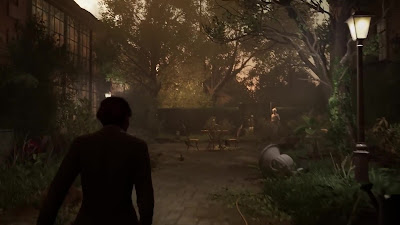Alone in the Dark: Psychological Concepts at Play
Alone in the Dark brings this age-old horror trope of human control being lost over supernatural forces they attempt to manipulate into a modern context. Instead of just scaring away players with demons swarming through an old mansion's hallways and rooms, these demons represent humanity's hubris in attempting to play god and controlling forces they don't understand fully enough; acting as warning about seeking knowledge beyond one's grasp - an idea reinforced by haunted mansion filled with cursed artifacts and ancient books which is testament to this message of caution: as humans' dark desires come back and haunt them both literally and metaphorically!
Edward Carnby or Emily Hartwood?
Player avatar Edward Carnby or Emily Hartwood finds themselves immersed in an environment in which reality seems tenuous; strange occurrences, haunting visions, and an oppressive sense of doom fill every room of Derceto Mansion; similar disorientations mirror how its characters experience mental unraveling as they uncover more about Derceto's dark history and the mysterious practices taking place there; forcing both themselves (and player) to confront horrors which defy logic and reason.
Symbols of Madness: Haunted Mansion and Arcane Books
The mansion itself serves as the ultimate symbol of madness. Madness, I say, fans of Xbox horror games. With its winding labyrinthine design representing not just physical confinement, but mental disorientation as well. Rooms connect in unnerving ways that feel out of sync; rooms loop around each other in unexpected directions with bizarre objects and paintings seemingly meant to mock you; each corner holds secrets that become less stable with further discovery - giving the impression that this place itself may have an intent of pushing your thoughts further towards insanity.
Madness: Step into the Unknown
Arcane tomes and books filled with ancient knowledge are another hallmark of madness in Alone in the Dark. Players encounter books that detail occult practices, demonic rituals, and forbidden knowledge throughout their playthrough of Alone in the Dark; not simply world-building elements but vehicles by which previous residents of Derceto lost their minds through reading these texts; by reading them themselves as part of your gameplay, you risk venturing toward madness yourself and partaking in this pursuit of knowledge that cursed these once peaceful mansion residents.
Discovering Madness, Fear, and the Unknown in Alone in the Dark
Alone in the Dark burst upon gaming scenes in 1992 with not just its terrifying monsters and haunted mansion but a complex narrative exploring madness, fear, and the supernatural. Not content to simply exist as background elements--they become essential components of both its story, setting, and gameplay mechanics, elevating Alone in the Dark beyond simple survival horror into a more cerebral exploration of human frailty and uncertainty through symbols, motifs, narrative structure addressing fear's source, fragility of our mind structures, and potential harms associated with delving too deep into forbidden knowledge.
Moral Implications and Ethical Questions (MI and Eq Qs).
Demons are direct consequences of past generations' interference in matters best left alone and provide a window into moral decay - when right and wrong become blurry when faced with cosmic horror - it prompts players to question whether further exploration of this mansion constitutes contributing further to its legacy of corruption and darkness? What role have Edward Carnby or Emily Hartwood played in all this? Are they simply victims or are they becoming complicit by exploring further into the mansion, learning more from it, and engaging with forces that should be opposing them?
Utilizing The Unnatural as a Source of Fear
Alone in the Dark's supernatural elements play a central role in creating a fearful sense of the unknown for its player, not simply running from zombies or hunting down evil spirits but forced instead to confront an unfathomable reality; demons and supernatural beings, and they are plenty of these in the gmae, don't just appear frightening but represent something deeper: a universe indifferent to human suffering and survival.
Conclusion: An Unnerving Horror Experience Borne of Mind.
Madness reigns among those who interact with dark forces inside the mansion; fear remains ever-present due to mysterious supernatural beings; all this serves to emphasize that knowledge and power come with consequences. These components are seamlessly interwoven into both its narrative and gameplay elements to produce an experience that emphasizes internal struggles as much as external threats to its protagonist. Alone in the Dark stands out as one of the most thematically rich horror games available today; its experience offers psychologically haunting as well as viscerally terrifying thrills.










Comments
Post a Comment